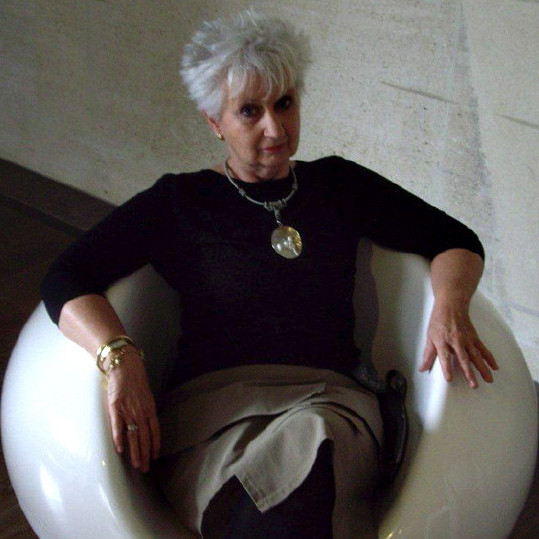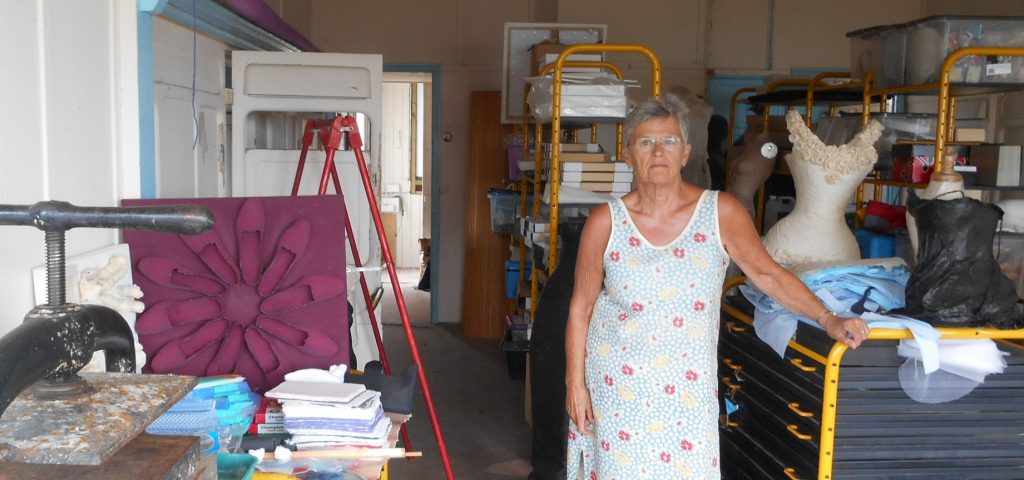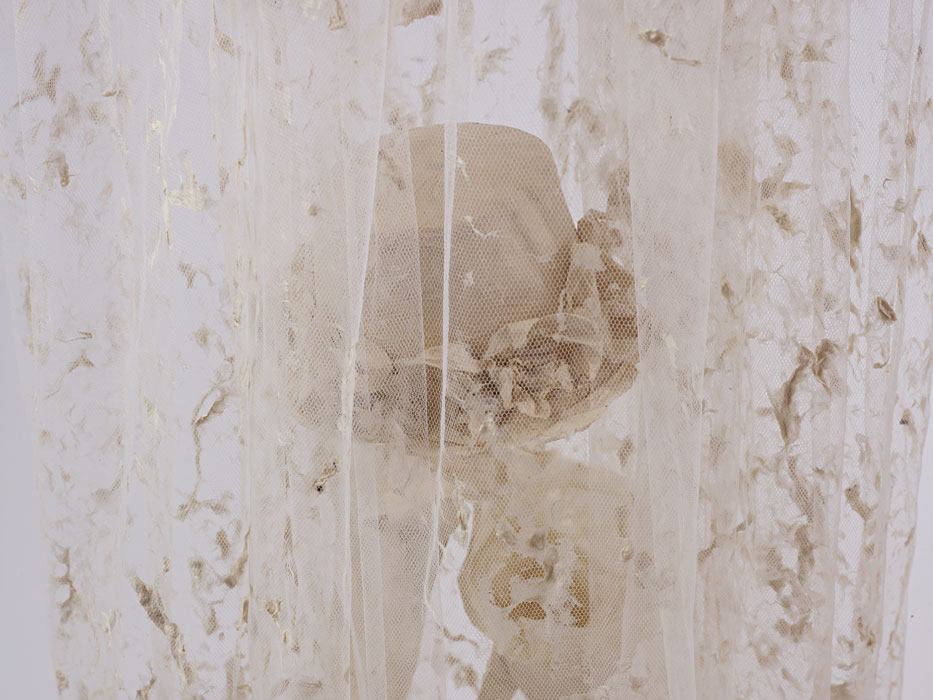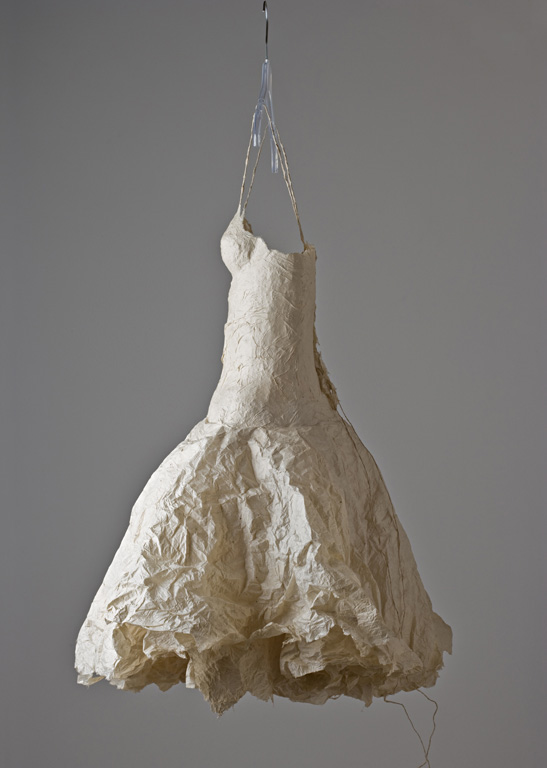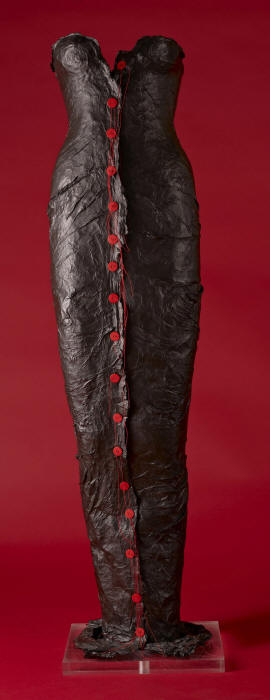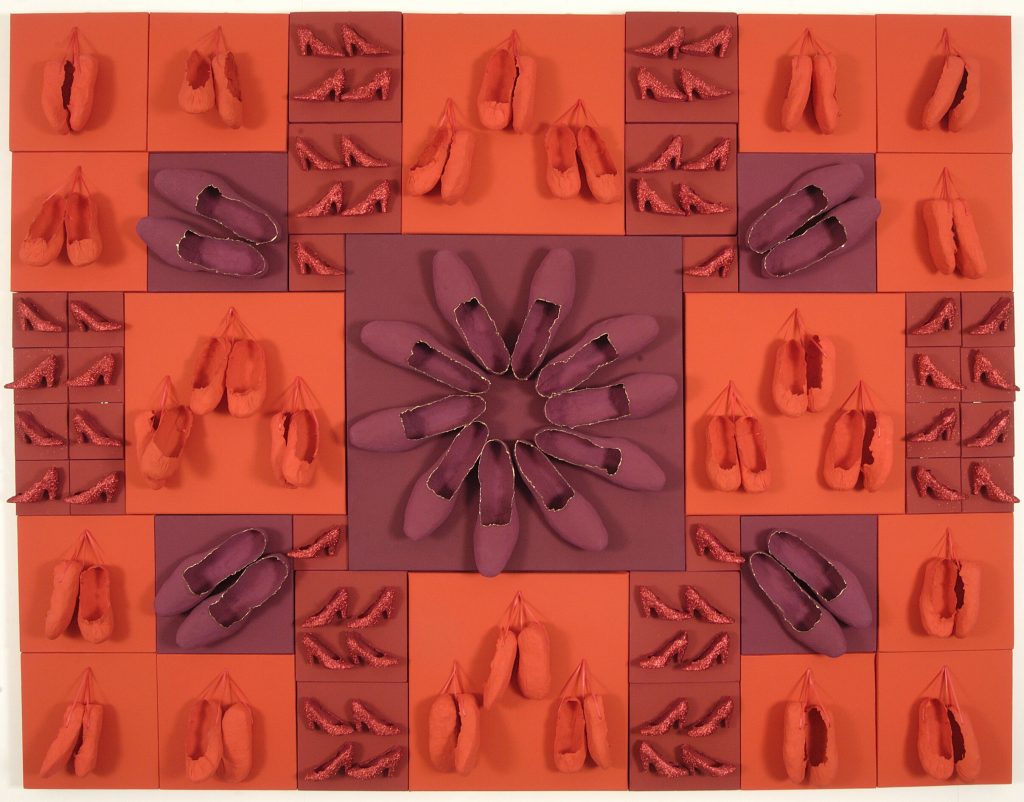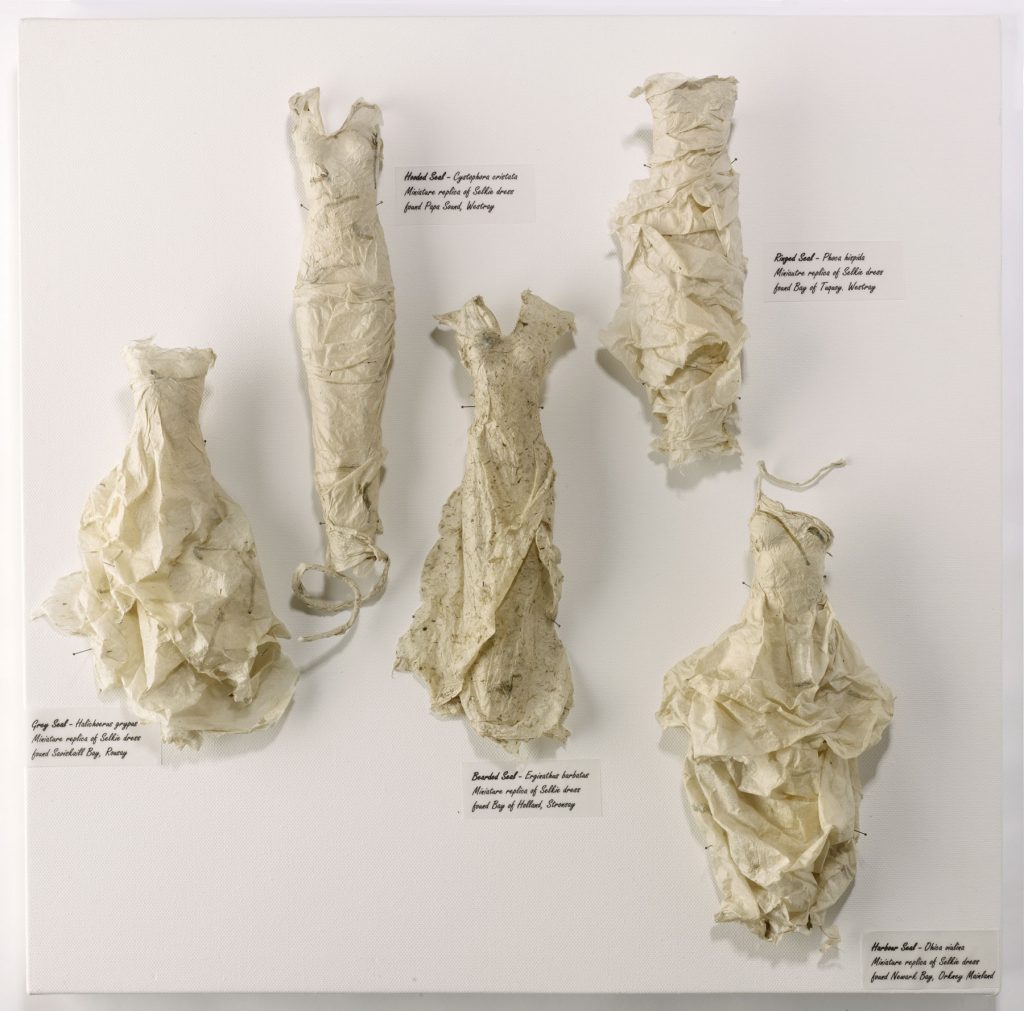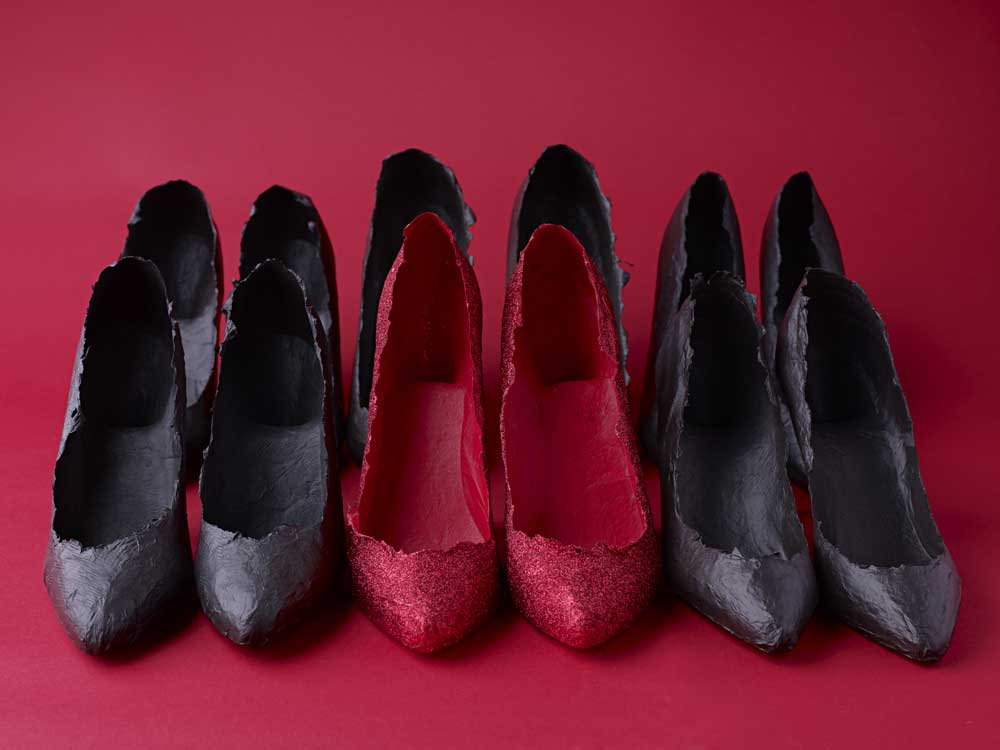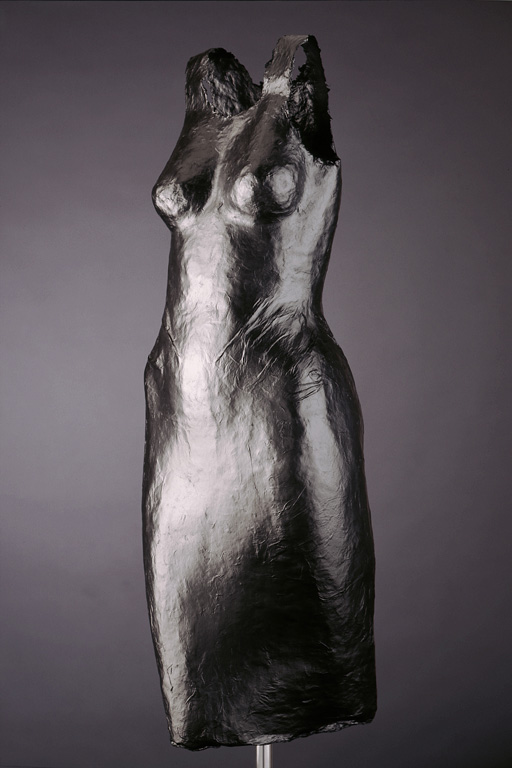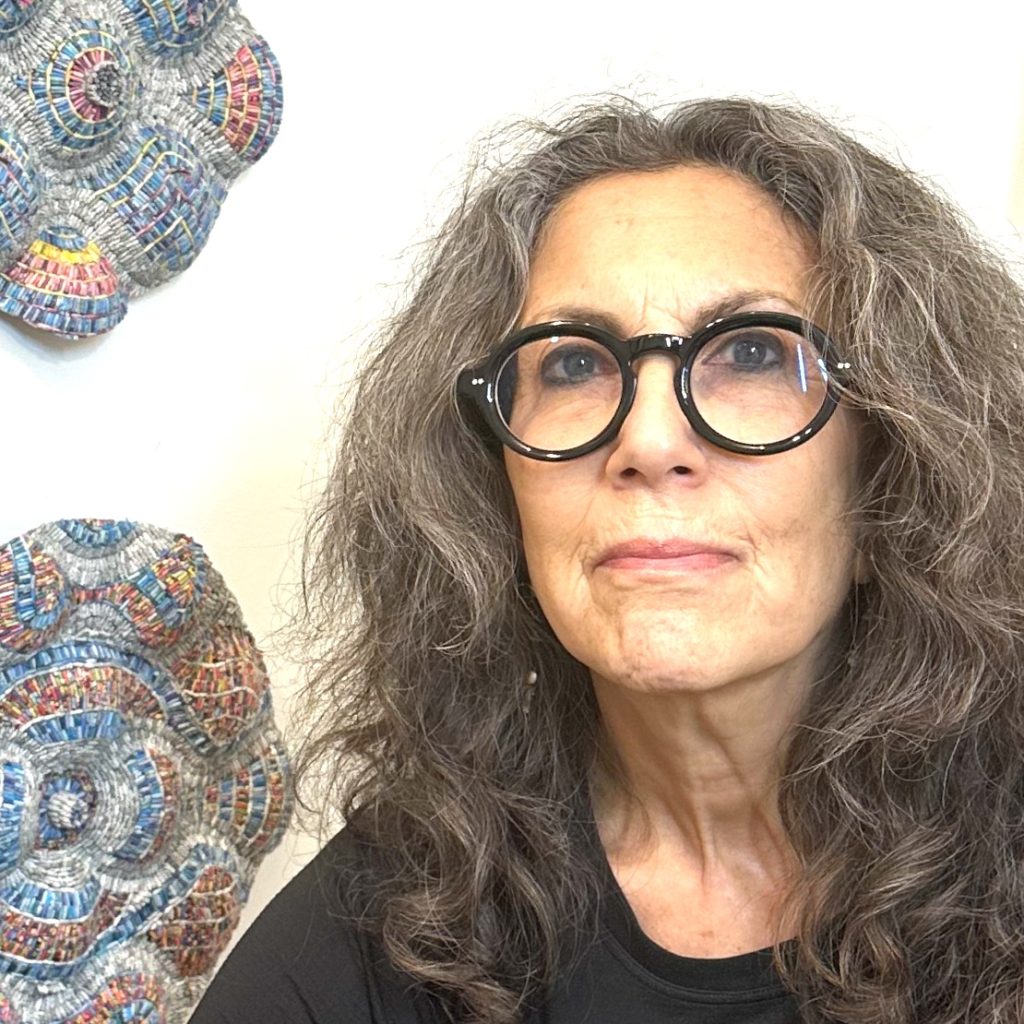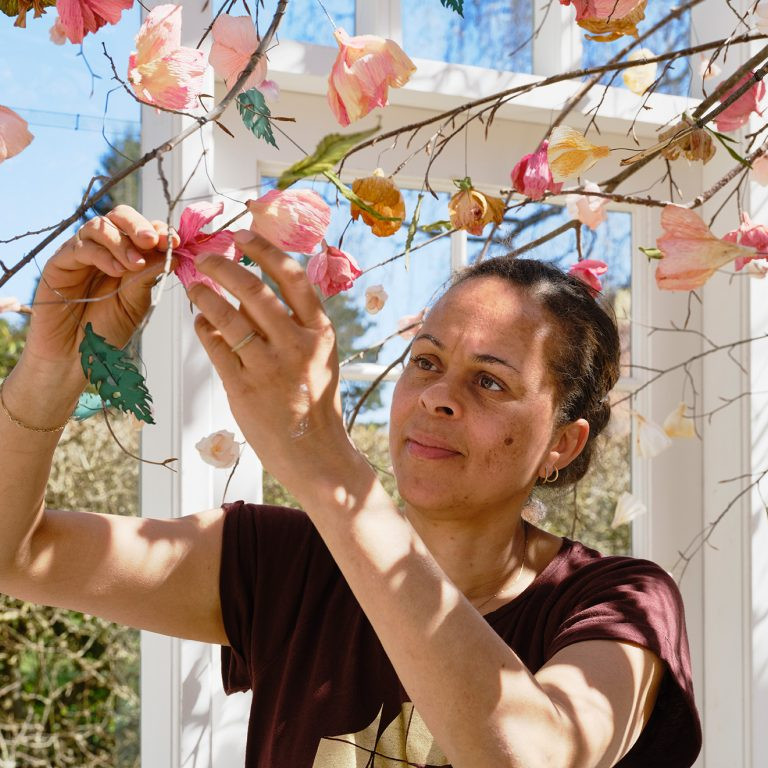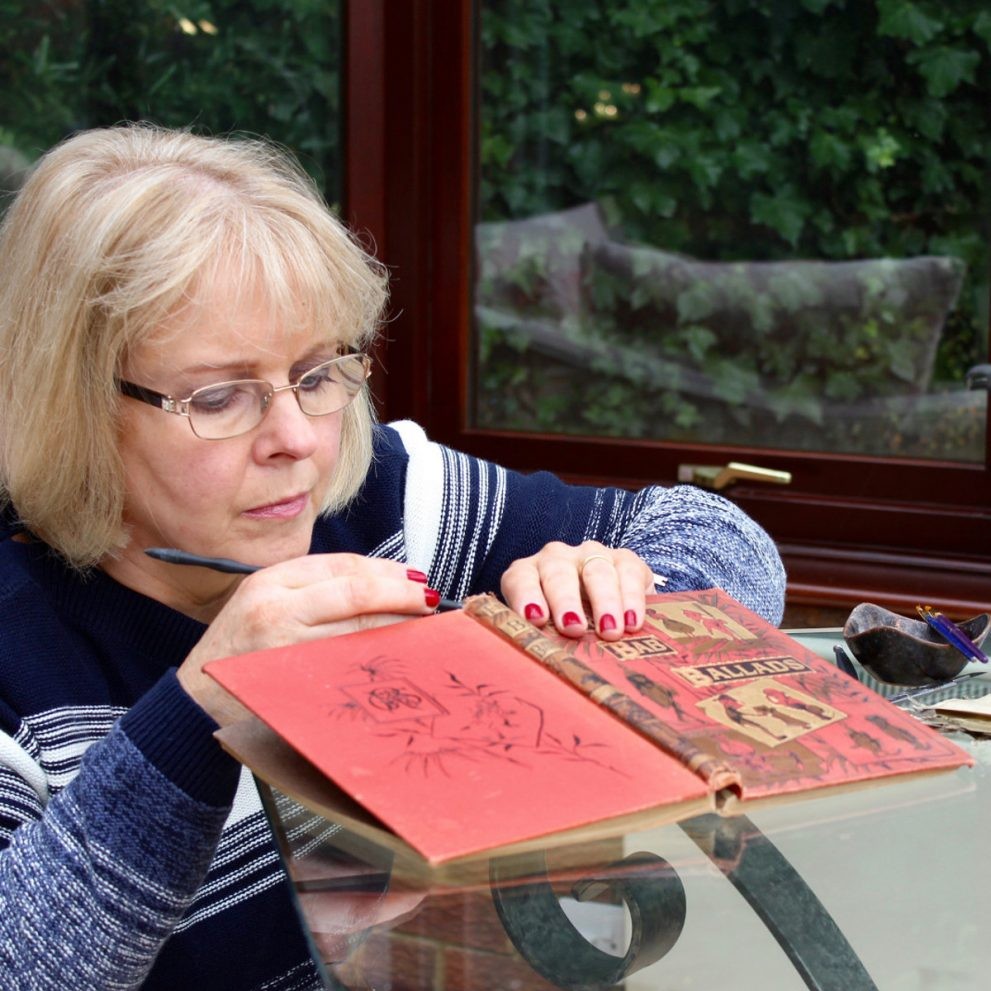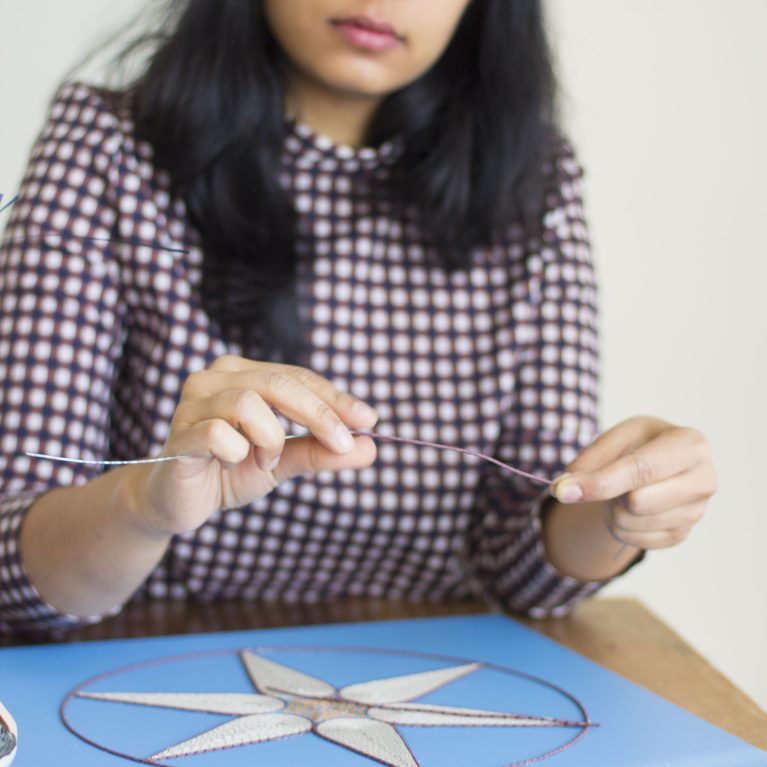Susan Cutts Paper Sculpture Artist
Are all, of your sculptures constructed in paper?
Yes, I work solely in paper although having said that I have used tulle dipped in pulp for the skirt in Cherish.
Cherish, detail
You make your own paper from raw materials. Briefly discuss this process.
When I first started using my own handmade paper (in about 1990) I went the usual route of cotton linters chopped up in a liquidiser. I found obtaining the linters in the Uk, at that time, quite difficult as was information on papermaking. Eventually, I discovered Carriage House in the US and started using an assortment of linters, In about 1998 I bought a Hollander beater from Peter Gennatar (great papermaker living in Holland). It changed my papermaking I was able to work from the raw fibres, which produced a pulp from which I made the sort of paper I had dreamt of making. From then on I was hooked on working with natural fibres. I enjoy the whole process of soaking, cooking etc. I’m not a person ‘in a hurry’ so papermaking suits me. Of course, working with oriental fibres has enabled me to push my technique (I think) and achieve the finish I envisage.
Fairytale
Currently you are in a temporary studio. How are you able to cope under these very basic conditions?
I moved out of my purpose built studio to make way for an indoor swimming pool. Crime – yes – but I can basically work anywhere so long as I have water and electricity, My current space has neither so I am working with the Hollander in our garage, the actual sheet forming and sculpting taking place in the temporary studio. The temporary place is a weird place to work, its formed of two Victorian railway carriages with a room joining them together. Originally they were seaside holiday homes (we live by the sea) and were sold with a piece of land, a well and a railway carriage after the First World War (19140=-1918)Foxes live underneath and can be a bit smelly but thankfully were there are foxes there aren’t mice!
I’m going to continue with the Hollander in my garage and am moving to an adjoining property, which was also once a holiday chalet but without the history of the railway carriages, on the plus side it has water and electricity, and a sea view.
You are a member of the Royal society of Sculptors. How does this fit with paper?
Are you the only MRSS working in paper?
I’ve been a member since about 1999, I submitted to join as I see my work as sculpture and don’t want it defined by the medium. I think there are other members working with paper but very differently and not solely.
Button Up
How do you activate colour in your work?
During the processing of the paper.
After the paper is made.
If the piece I am working on demands colour I tend nowadays to use pigment specific to handmade paper, and this is added during the pulp making process. I have used fibre reactive dyes in the past, mainly because I was familiar with how to use them and how they worked and they were readily available in the UK.
Red Shoes
In your past you had training in Theatre Corsetry, expand on how this background has developed your work.
I love the image of the corset, I love working with the image. Being me I wanted to learn how to construct the corset in fabric, basically, I felt the understanding of the construction helped me in the construction when working with paper.
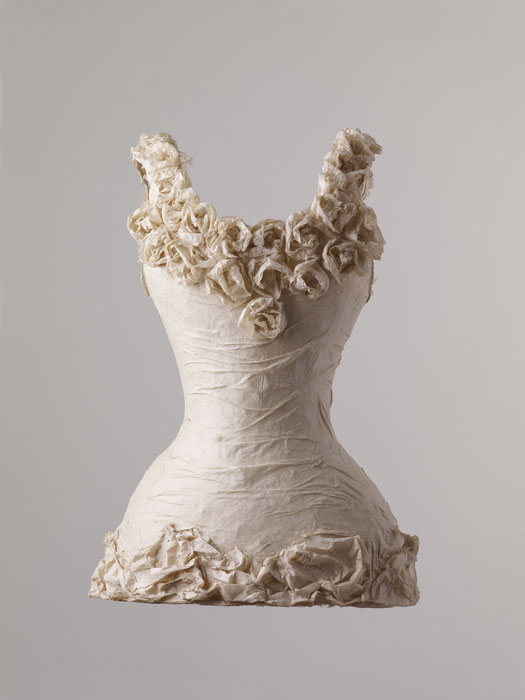
De Colletage, front
You comment, ‘I choose through my work to explore the relevance of dress to identify and the integration between wearer and observer’ Discuss.
I CHOOSE through my work to explore the relevance of dress to identity and the integration between wearer and observer. Basically, I use dress as a metaphor – I want the viewer to relate to the work, to identify with the work, I want to explore with the work the relevance of what we wear and how we wear and how we perceive what is worn. I like using contemporary dress with an historically inspired piece and vice versa.
Selkie
On a larger scale you work on installations. Discus one or two of your installations.
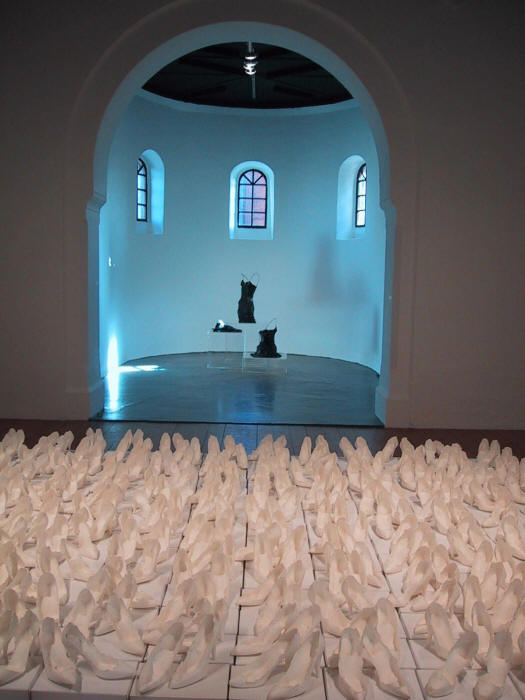
Stiletto
My first major large scale piece was Stiletto. I am often inspired to start a piece with maybe one or two pieces in mind but as I work I find more and more reasons for making the piece and the work gets bigger and bigger. I like working in multiples for this reason – I often see the piece as needing to made up of many parts, its hard sometimes to know when to stop.
Red Shoes
Explain about your shoes / stilettos and how you have used them in various ways.
I love the shape of shoes, I love how an old shoe, a loved shoe portrays and betrays the wearer. To me the image of a shoe is very evocative, to make them in paper means they are never worn, they are fragile. I am currently thinking about a piece using the ballet shoe. I love the image of the ballet shoe and want to make a large piece – its all about finding the right reason for making the work. I have had this idea for sometime and only recently thought that the ballet shoe would be the ideal ‘messenger’ for the piece.
‘Who Knows Where the Time Goes’- Discuss.
The importance of the hanging of this work.
How it felt to see your work in the Museum space.
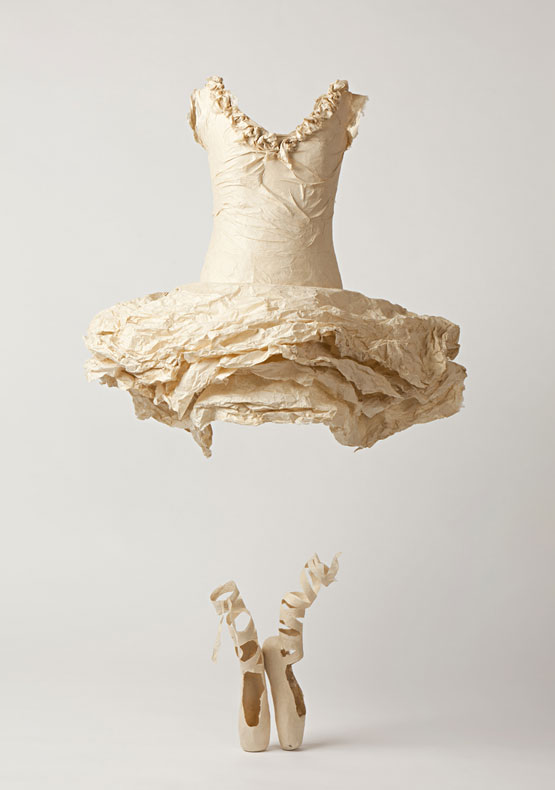
Who Knows Where the Time Goes
You ask about the importance of the hanging of this work. To be quite honest I try and make my work as easy to install as possible. I am often not at the hanging so rely on the technician to ‘do his job’ which, invariably they ‘do’ very well. This piece was easy to install just a matter of hanging the dress over the shoes at an appropriate height. The ballet shoes sit below the dress and are balanced.
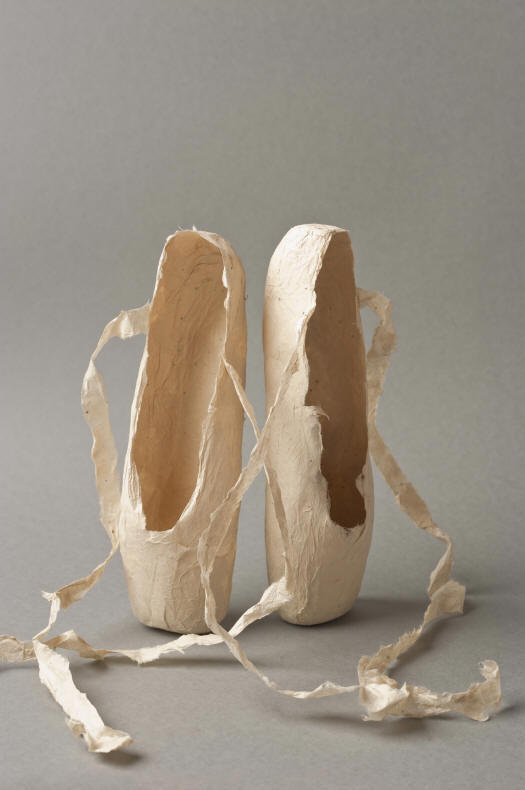
Surlopointe
It is always good to see your own work in an exhibition although I always think when I see the work, I could have done some things better or differently.
What are you currently working on?
I am about to start work on the ballet shoe piece. I am currently preparing the fibre – gampi – then I’ll make the pulp and then the hundreds (hopefully not thousands) of sheets of paper for the work. These I will freeze until I need them as I work with the paper whilst wet which enables me to work as I do.
Discuss the visual impact of the human body has on your work even in its absence.
I like the idea of the body/person being the ghost in my work. Heads, hands and feet do not feature in my work. I am basically only interested in how the garment drapes over the body, is moved by the body. For me the impact of the work is the creasing, drape etc I’m not particularly aware of the body shape I have chosen. More recently I have been working with, I think, fairly androginuous forms but that may not occur to the viewer.
Little Black Dress
Compare two pieces to show how paper can be manipulated to form different textures.
Different textures. I can’t really think of how to answer this question. I make and work with the paper, the paper has a tremendous input in the work. Depending on the fibre, how I have beaten it, made the paper, applied the paper all dictate the final texture – basically- the texture doesn’t have an awful lot to do with the maker. I can create creasing, drape etc but how it dries is up to the paper itself. A high shrinkage will give a different effect from paper that hasn’t shrunk so much – the texture, I think, is out of my hands its the papers contribution to my work. To have complete control of the process, to have a very set idea of how the work should look is not something I would want or could achieve!
You have exhibited around the world what was on exhibition that challenged you but also allowed you to develop.
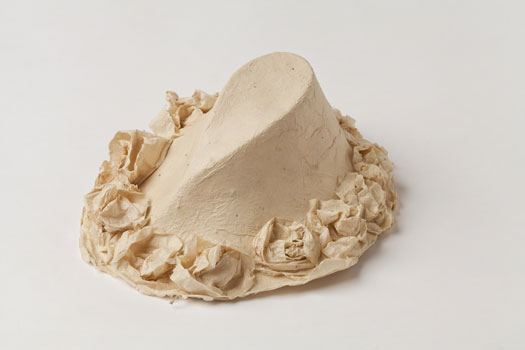
‘Cherish’ detail
I know most artists would say that every exhibition is a challenge and you learn something every time your work goes on public view. Mostly I have learnt from exhibiting is the basic nitty gritty of sending the work and making it easy to install. I think I learnt something from Cherish which could push my work into using fabric.
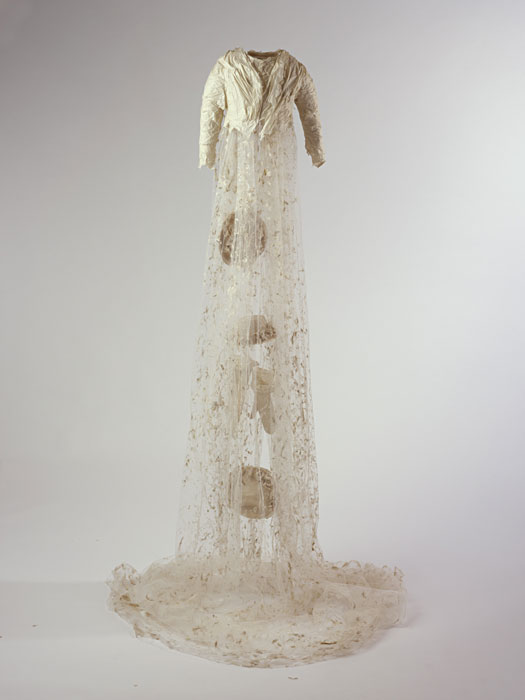
‘Cherish’
I dipped netting into pulp, I love the effect and might use it again but basically I love technique and try with each new piece to push the technique to achieve the image I want. I am a slow worker, I think about the next piece of work for AGES taking into account, once the inspiration is settled in my mind, how the work will be formed, which fibre to use.
Contact:
Susan Cutts
susan@susancutts.com
www.susancutts.com
Deborah Blakeley, Melbourne, Australia
Interview by Deborah Blakeley, July 2019
Think a colleague or friend could benefit from this interview?
Knowledge is one of the biggest assets in any business. So why not forward this on to your friends and colleagues so they too can start taking advantage of the insightful information the artist has given?
Other artists you may be interested in:

